
Review
Anno 117 review: reaching a flow state by building in ancient Rome
by Samuel Buchmann

"Digimon Story Time Stranger" offers pure JRPG enjoyment with over 450 collectable monsters, complex evolution mechanics and strategic turn-based battles.
As a child, I was a big fan of the «Digimon» anime series, but somehow I never managed to immerse myself in the gaming world. Until now. With «Digimon Story Time Stranger» I finally found the perfect entry point and I can say: I'm thrilled!
I choose between a male or female character right at the beginning - I opt for the female version. During the story, my counterpart becomes my counsellor, who contacts me via Digivice. As an agent of the ADAMAS organisation, which monitors and researches phenomena in the Digi world, I investigate an anomaly. What happens next is like something out of a film: I find out that Digimon are devastating the environment, destroy a mysterious egg and am pulled through a portal into the Digimon world - eight years into the past. Strangely enough, I still stay in touch with my counsellor and keep finding out what's going on in the future.
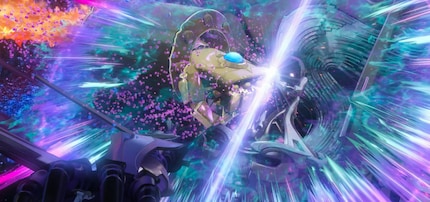
The story itself is pretty straightforward. In the first ten to twenty hours, I mainly take on missions to fight Titan Digimon - who are threatening the peace of the Digimon world. These sections are mostly superficial, and I in particular remain frighteningly pale as the mute protagonist. The human NPCs are also boring with their lack of depth.
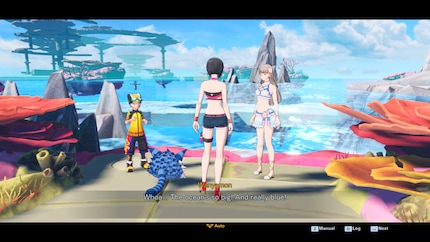
The Digimon shine all the more, and that's ultimately what counts. Shellmon, for example, lovingly cares for an injured Titan Digimon because they're both fed up with fighting all the time. Vulcanusmon makes me smile constantly - the God Digimon is passionate about collecting Transformers-like figures and is as happy as a little child. Such character moments bring the rather simple story to life.
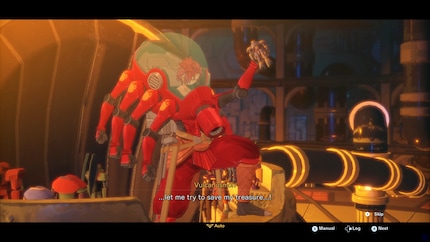
Overall, Time Stranger offers few but well-placed twists and deals with classic topics such as friendship, loyalty and courage. Nothing revolutionary, but certainly entertaining. The conversations with the NPC digimon contribute significantly to the immersion. Their dialogues change after major events and provide more information about the world.
There is a central town in each area, but the majority of the action takes place in Central Town. In the towns, I do the typical JRPG shopping, advance the story or complete side missions. These are essentially errands and fights, but they fulfil their purpose: they are linked to the main story and advance subplots. They are particularly recommended for the agent skill points that I need to digitise the Digimon - more on this later.
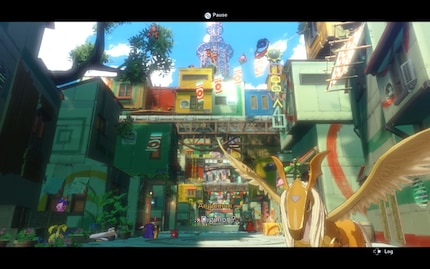
There are numerous dungeons that are not too long and are designed like a tube. There is little to explore off the beaten track. However, each dungeon offers a special gimmick to help you progress. Underwater, for example, Submarimon helps me to fight the current. Palmon, on the other hand, uses his vines to help me swing from tree to tree. These support digimon also help me as a guest in battle.
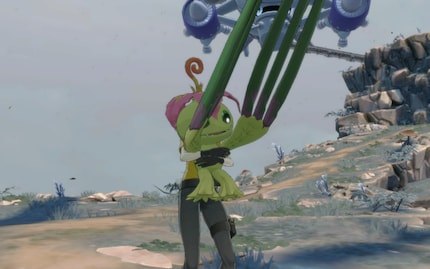
Let's get to the stars: the Digimon themselves. While exploring, I come across aggressive specimens that I can attack from the field to land preemptive strikes. Weaker opponents can even be defeated directly in this way. I like the system, but it almost becomes routine - I'm constantly pressing the attack button in case a Digimon is hiding somewhere.
To develop new team members, I fight them. Each encounter increases the scan percentage of the respective species. At 100 per cent, I can evolve the digimon. But I should wait until then. I can even increase the percentage to 200 per cent to make it even stronger. This is where the real fun begins: with over 450 Digimon, it quickly becomes overwhelming - in the best sense of the word.
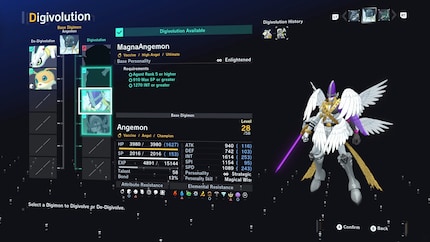
In «Time Stranger» the digivolution is not linear. I can also de-digitise them, i.e. take them back to a lower stage of development. This is necessary to obtain certain Digimon in the first place.
The interaction with the Digimon influences their personality and bond. I simply speak to them and give them answers to their questions. Depending on their personality, they receive certain values when they level up. Some digivolutions require certain minimum status values, which I can achieve more quickly. My agent rank, which I increase with the aforementioned agent skill points, is also added to the digitisation requirements.
If I don't want to make my Digimon stronger with battles, there is the ingenious Digifarm: Digimon train there away from battles, training items improve their status values and food strengthens the bond. My only criticism of the farm is that I can't see the digitisation requirements for the digimon that are placed there. I have to memorise them before I place them there.
The digifarm is necessary due to the complexity of digivolution. Because later in the game, the requirements become even more specific. It becomes a game within the game to keep track of the huge number of possible paths. It's complex, but a lot of fun.
The combat system is turn-based but multi-layered. Seven attributes form a rock-paper-scissors system: virus beats data, data beats vaccine, vaccine beats virus. There are also elementary resistances and weaknesses. If I utilise these, the damage is multiplied - which is particularly important for survival against bosses.
This makes analysing enemies at the touch of a button a routine task so that I know their weaknesses. With Cross Arts, my special ability as an agent, I give the Digimon buffs such as temporary status boosts.
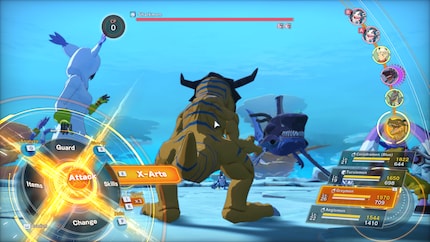
Especially cool: I can swap out my active three Digimon for three from my reserve at any time in battle. This encourages experimentation and I'm not at a loss if a new opponent has resistance to my active Digimon.
Battles against normal opponents are deliberately kept simple so that I can concentrate on team building. With up to five times the speed and auto-battle, there are two great quality-of-life features. In addition, not only the active Digimon receive experience points, but everyone in my collection.
The boss battles are in a different league - and not just because of their design. I need at least two attempts for each one: one to analyse, one to win. These battles are challenging and test strategy, party management and an understanding of buffs and debuffs. The Cross Arts have helped me out of a jam more than once. This is where the investment in my team pays off.
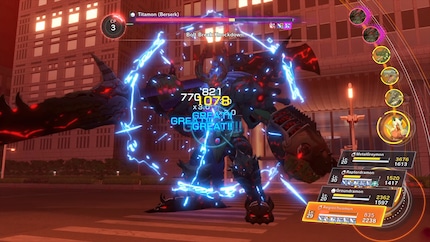
Although I have praise, I also have criticism. The graphics and the presentation in general definitely won't win any awards. The human world in particular looks grey-on-grey and offers little variety. The Digimon world is more colourful, but the self-contained areas are small and many assets are used too often, so the world always looks the same. The advantage of this is that the game also runs smoothly on my Steam deck - and always looks better than any «Pokémon» game.
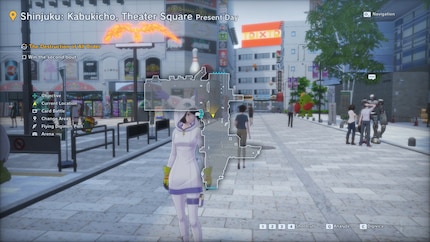
The English voice output is fine, but it seems strange that not everything is dubbed - even story-relevant passages. However, I played most of the time with Japanese voice output.
The sound design, on the other hand, deserves praise: every action has a unique sound effect and the respective tracks for each area are memorable. The «Central Town» theme in particular puts a smile on my face every time and I unconsciously bob along to the beat.
«Digimon Story Time Stranger» has been available for Playstation 5, Xbox Series and PC since 3 October. The game was provided to me by Bandai Namco for PC testing purposes.
"Digimon Story Time Strange grabbed me more than I expected. As a newcomer to the series, I quickly got to grips with the system - even if it is complex. I can therefore well imagine that it also offers enough new things for old hands to keep them glued to the controller.
The story, although nothing special, entertained me mainly because of the multi-layered Digimon. What's particularly great is how all the gameplay mechanics intertwine, so that even the smallest interaction influences the big picture. It's addictive!
My main criticism is the presentation. The graphics are mediocre and the dungeons are repetitive.
But these are minor things. After years of hesitation, I'm glad to have finally found my perfect introduction to the world of "Digimon" games. I don't regret a second of it and can highly recommend the game.
Pro
Contra
From big data to big brother, Cyborgs to Sci-Fi. All aspects of technology and society fascinate me.
Which films, shows, books, games or board games are genuinely great? Recommendations from our personal experience.
Show all